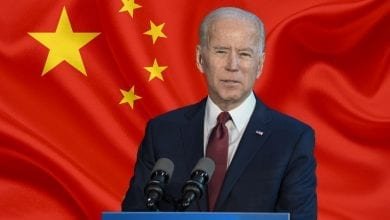The Federal Reserve Is Misleading the Public About Inflation
Just how bad is the inflation problem?
According to the Consumer Price Index (CPI), annual inflation from September 2020 to September 2021 was 5.4%. Yet the Federal Reserve (Fed) says that Personal Consumption Expenditure (PCE) increased by only 4.4% from September 2020 to September 2021.
The Fed also says that if volatile food and energy prices are removed from the CPE, the annual core inflation rate falls to 3.6%. While both the PCE and the core PCE are at levels that are two times higher than the Fed target, the numbers make it appear that inflation is not too much of a problem.
The Fed is misleading the public. The annual inflation rate that the average consumer has faced this year is about 6.5%, as measured by the CPI. Since inflation will likely accelerate in October, November and December, the inflation rate for all of 2021 will be about 7%. Why is there so much confusion?
The government must estimate the inflation rate that is being experienced by the average American consumer. It would be impossible to get data from all of the more than 140 million American households. What the U.S. government has done is to take a statistically significant sample that is more easily measurable and infer from that what the population is experiencing.
The CPI is calculated by purchasing a basket of goods and services that the average consumer is likely to buy. That basket is purchased at a number of locations around the country. Then the same basket is purchased at the same locations the following month. The percent increase in price is recorded as the CPI.
Last month, it cost 0.5% or 50 basis points, more to purchase the basket than it did in the prior month. While a figure, i.e. a basis point, less than 1% may not seem consequential, finance executives know how significant any increase, especially half a percent, actually is.
The PCE is calculated similarly except it assumes that consumers will not necessarily pay the higher price, but rather switch to a product they would not normally purchase.
For instance, suppose a family typically buys steak for two meals per week. If the steak price rises significantly, the family will buy steak just one time per week and purchase tuna fish the other day. Tuna sells for a fraction of the price of steak. Therefore the consumer experiences less inflation, although there is a decline in the standard of living since consumers will purchase something they really don’t want.
The reality is that the CPI is a better measure of inflation while the PCE is a measure of possible consumer reactions to inflation.
Normally the core rate is considered a better inflation indicator since energy and food prices fluctuate widely. The theory is that if prices rise, that will increase business profits and encourage business to produce more. The resulting increase in supply will bring prices back down.
A New Cause and Effect for Energy Prices
However, that is not the case today. Energy prices are rising because of supply restrictions caused by government policy. Since the Keystone Pipeline will not be built, since there is no more drilling on federal land, since there is no drilling off the Alaska coast and since the Biden administration wants higher prices on fossil fuels to encourage the use of renewables. Thus, there is absolutely no reason for energy prices to come back down anytime soon.
Additionally, energy companies will not expand production by making new investments, because of the Biden Administrations’ policies that discourage future production by traditional energy producers. In other words, under current government policy, energy prices will not fall, meaning the core inflation rate is a poor indicator.
Then There Are Food Prices to Consider
Similarly, food prices may not come down, either. Biden has discouraged lower-paid workers from going back to work by giving them more free stuff. To combat this, businesses must increase wages to attract these workers. That means labor cost will rise, leading to a higher cost to produce food. These higher labor costs will keep food prices from falling, even if the supply is increased
The average American is seeing an inflation rate that will hit 7% for 2021. In the last four decades, since the Fed began controlling the money supply to keep inflation in check, it has never once failed to act when there was even a hint of inflation. But today, the Fed continues to expand the money supply by electronically printing $120 billion per month of new money to purchase government bonds.
The United States Federal Reserve has said it will begin to gradually taper bond purchases shortly, but why has it waited so long — especially considering the unemployment rate has dropped to 4.8% after spiking at the outset of the pandemic? In addition, the Fed continues to keep interest rates near zero.
The Fed has often accommodated government economic policy in the past. Never have they kept the vast expansion of the money supply and the near zero interest rates in place when inflation was running this high.
While the Fed is supposed to be apolitical, their actions seem to indicate something to the contrary. For whatever reason, the Fed is misleading the public.



